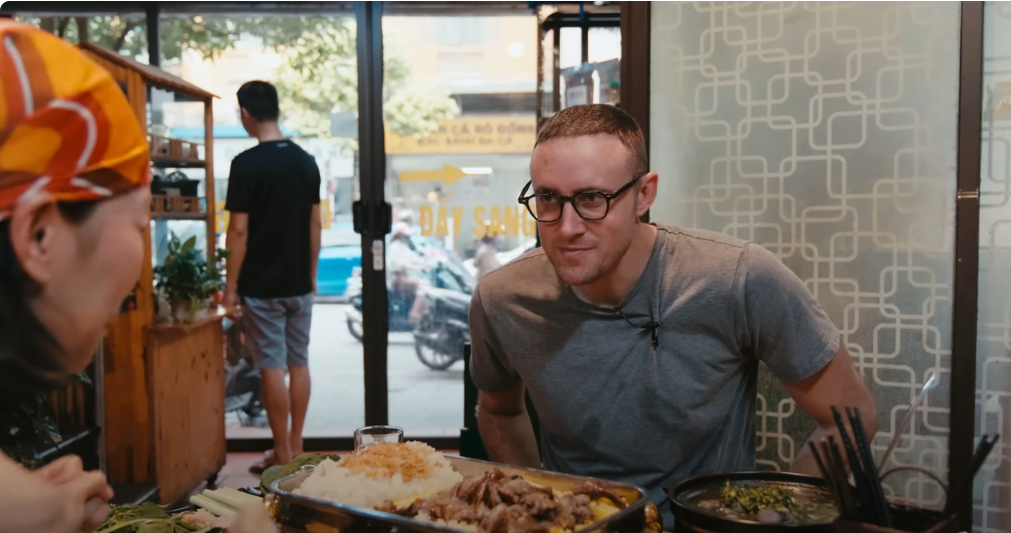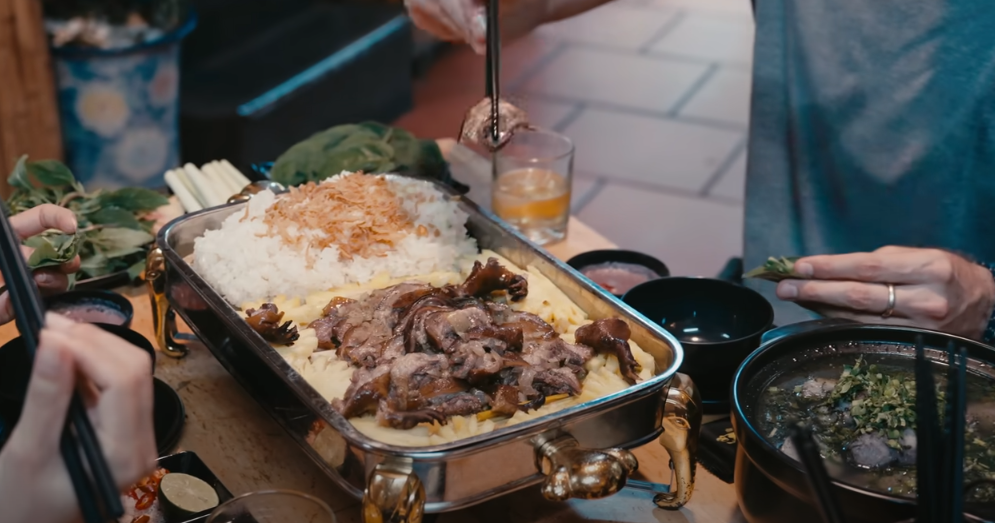Despite the high price, he declared the meat more delicious than lobster.
Andrew Fraser, an Australian content creator living in Vietnam, operates a YouTube channel with over 150,000 followers, where he shares his adventures exploring unique foods and travel experiences. Known for his willingness to try exotic and sometimes "scary" dishes that might make other Western tourists recoil, Fraser has previously sampled nậm pịa, fried bamboo worms, and roasted grasshoppers.
His recent travels took him to Thuong Bang La commune, Van Chan district, Yen Bai province, where he delved into the local practice of raising bamboo rats.
Bamboo rats, also known as nứa rats, belong to the rodent family. Though they resemble mice, they are significantly larger, with long bodies and grayish-black fur.
In Vietnam, bamboo rats are commonly found in mountainous regions like Hoa Binh and Yen Bai. Their diet primarily consists of bamboo, but they also feed on sugarcane and corn.
Mr. Hai, who owns a bamboo rat farm in Thuong Bang La and hosted Fraser’s visit, started raising these animals four years ago. His farm now houses around 400 rats. According to Hai, a female bamboo rat can give birth to 2-4 litters annually, with each litter producing 2-6 offspring.
After 6-8 months, the rats typically weigh between 1-1.5 kg and are ready for market.
To ensure the well-being of the bamboo rats, the farm is divided into separate enclosures to reduce disease transmission and facilitate monitoring of their growth. Given that bamboo rats prefer dark environments, minimizing light and noise exposure is crucial.
Fraser discovered that bamboo rat meat is highly prized and can be used in various dishes, appealing to culinary connoisseurs. "Can you believe it? Bamboo rats are sold to restaurants for up to 75 USD per kilogram (over 1.8 million VND), more expensive than lobster," Fraser commented.
Since the farm primarily supplies bamboo rats to restaurants in Hanoi, Fraser decided to sample the dishes made from the animal upon his return to the capital.
Accompanied by his Vietnamese friend Lila, Fraser visited a restaurant specializing in Northwest specialties on Le Van Huu Street in Hai Ba Trung District, Hanoi, to try some bamboo rat dishes. They watched as the chef prepared the meat.
The preparation process begins with dipping the bamboo rat in boiling water to remove the fur, followed by wrapping it in newspaper and roasting it over a high flame. This technique yields crispy, aromatic skin. The rat is then cleaned, with its organs removed, and the meat is carefully separated from the bones.
The bones are stir-fried with spices before being simmered with taro until tender, while the meat is boiled with lemongrass and ginger to eliminate odors and enhance its flavor.
Once cooked, the meat is sliced into thin pieces and served with sticky rice, fried shallots, and a drizzle of sauce.
Fraser noted that the preparation process for bamboo rat meat bore some resemblance to the way dog meat is cooked in Vietnam, including the use of similar herbs such as betel leaves, Vietnamese coriander, and culantro.
When the dishes were served, Fraser and Lila eagerly tasted them and were pleasantly surprised by the flavor. "I can taste a variety of flavors in this dish. The meat is rich and slightly chewy," Fraser remarked.
He tried dipping the bamboo rat meat in shrimp paste, finding it reminiscent of dog meat.
Both Fraser and Lila found the boiled bamboo rat meat to be delicious, with Lila particularly impressed by the chef's marinating and cooking techniques. "When I tasted it, I didn’t think of it as rat meat, but rather as a familiar type of meat," Lila shared.
Having tried rat meat before, Fraser wasn’t intimidated by the bamboo rat dish.
The two diners were also impressed by the soup made from bamboo rat bones, appreciating the restaurant’s use of every part of the animal. "It’s hard to believe that the bamboo rat bone soup is this delicious," Fraser commented as he enjoyed the dish.
Fraser acknowledged that while tourists could choose lobster or king crab for the price of 50-75 USD (1.2 - 1.8 million VND) per kilogram of bamboo rat meat, the bamboo rat dish, though pricey, was a unique culinary experience worth trying at least once.


 |
 |



Photos: Andrew Fraser
Thao Trinh